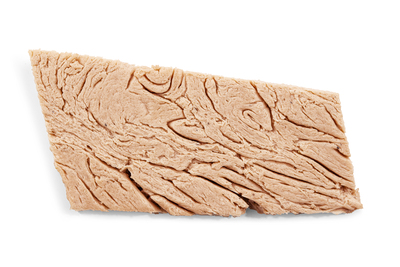The potential of fish sidestreams

Seafood tech company Hailia has researched the nutritional composition of fish products made with sidestreams from salmon filleting, such as heads, fins and frames.
The Finnish company, which specialises in the utilisation of sidestreams in food production, found that sidestream-derived products contained notably higher levels of key nutrients like collagen, calcium, vitamin D, iron, zinc and omega-3 fats than typical fillet products currently on the market.
The higher levels of calcium and high vitamin D can be explained by the increased bone and cartilage content in ready products made from sidestreams. As the two nutrients work symbiotically, consuming these products can have a positive effect on calcium uptake in the body.
Sidestreams could also help to address the global nutritional challenge of iron deficiency, an issue that reportedly affects as many as one in three women. With Hailia’s analysis showing that products made from sidestreams contain twice the amount of iron compared to salmon fillet, these products could increase the iron content of everyday fish-based foods while supporting more efficient use of marine resources.
The results showed higher levels of marine collagen: up to 2 g per serving. According to Hailia, this is five times more than what is found in fillet products, and similar to the level in many common collagen supplements. The finding could present an opportunity for the marine collagen market to produce a more sustainable product through whole-food applications. Driven by the global wellness and beauty industry, this rapidly growing market currently depends upon fish skin and scales that are often imported and processed separately from food production.

“Sidestreams have been valuable in cooking throughout our history, from broths to local delicacies, because they give good taste and contain high levels of healthy nutrients,” said Michaela Lindström, CEO and founder of Hailia.
“Our data shows that these same raw materials can serve a much bigger purpose, not just as traditional ingredients, but as a natural source of nutrients like marine collagen that are increasingly sought after in global wellness markets in supplement form. By producing ready-to-eat products from these parts of the fish, we can offer people better nutrition in everyday foods, while reducing waste and creating more sustainable value from every catch.”
Hailia’s technology has developed from use for small pelagics and salmonoids to be applicable to all fish sidestreams, adding value to previously low-yield raw materials and expanding food producers’ product portfolios with new products for consumer markets.

“For decades, the best parts of grains were discarded; we focused on starch and left behind the bran and germ, which we now know are the most nutrient-rich components,” said Otto Kaukonen, CTO and Co-founder of Hailia.
“We’re seeing a similar pattern in seafood today. Traditional processing has prioritised fillets, even though the heads, frames and fins contain much higher levels of collagen, calcium and iron. With Hailia’s technology, we can finally unlock the full nutritional potential of these parts, giving them a new life in higher-value products. It’s a shift that could make seafood sidestreams the next superfood that’s naturally nutrient-rich, sustainable and ready for modern diets.”
Call for comment on endo-1,4-beta-xylanase as a processing aid
Food Standards Australia New Zealand (FSANZ) is calling for comment on an application to permit...
UV light technology to curb viral transmission in poultry environments
Widespread bird flu outbreaks underscore the urgent need for disinfection solutions to curb viral...
Aussie Barramundi farm achieves certification for responsible aquaculture
Northern Territory's Humpty Doo Barramundi is claimed to be the first Australian Barramundi...











